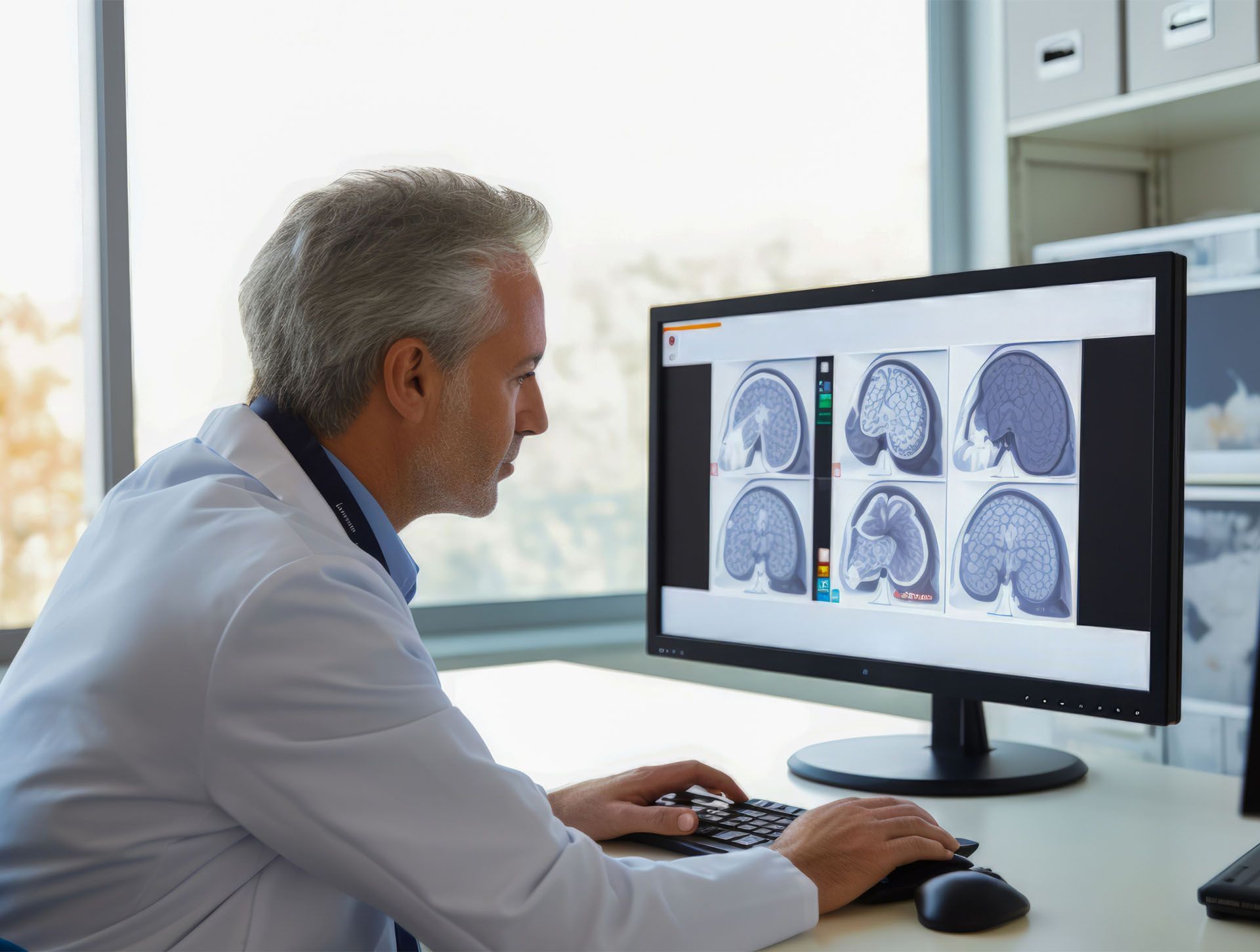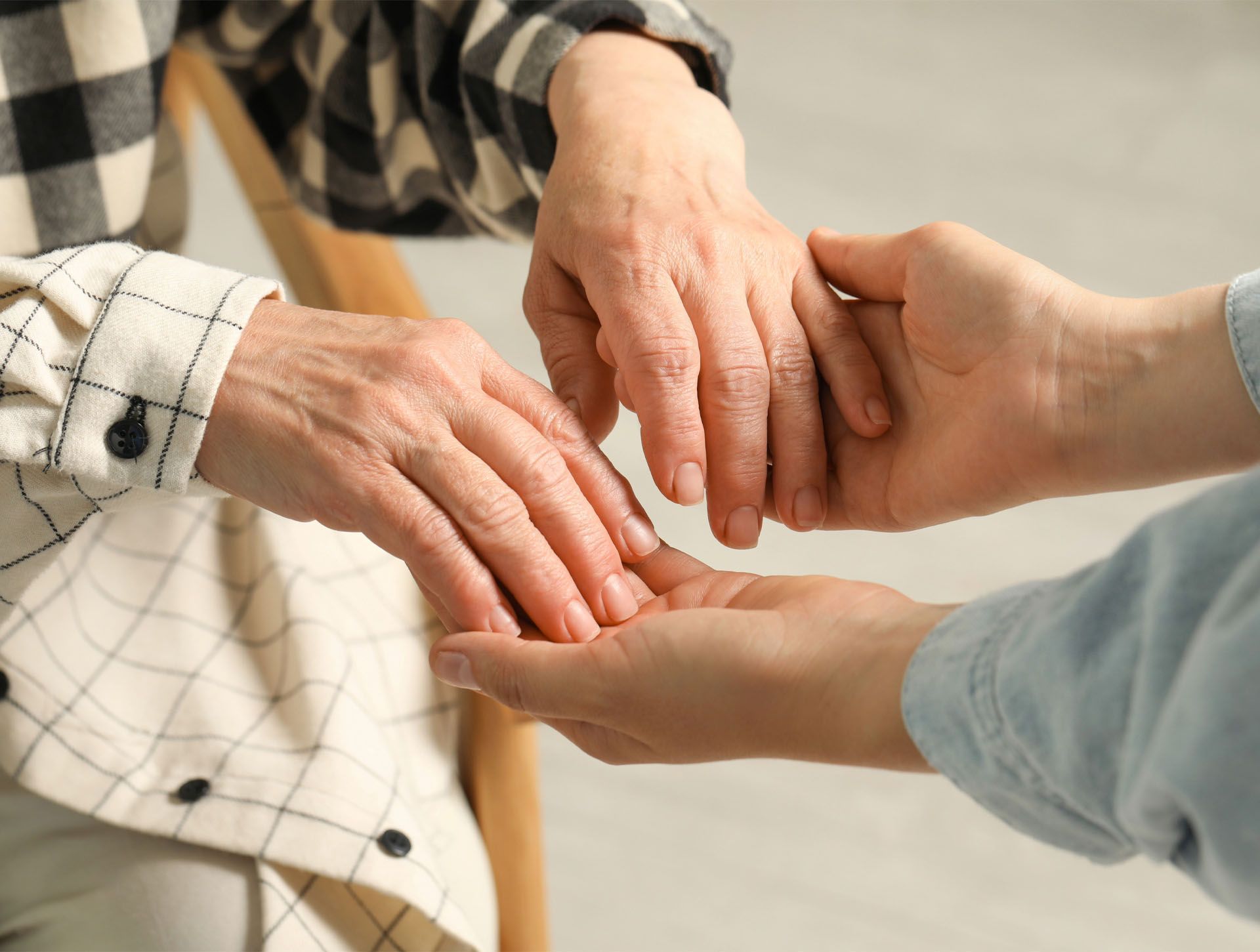Any Questions?
Government Support and Resources for Parkinson’s in Australia
Living with Parkinson’s comes with its fair share of challenges, not just for those diagnosed but also for their families and carers. With around 150,000 Australians living with Parkinson’s—and over a million people directly or indirectly affected—the need for proper support and resources has never been greater. In fact, Parkinson’s cases in Australia are increasing by about 4% each year, and the economic impact has soared past $10 billion annually.
Managing Parkinson’s isn’t just about medical care—it’s about having access to the right therapy, assistive devices, financial support, and, in some cases, full-time care. The good news is that there are government programs and services designed to help.
In this guide, we’ll walk you through the key government support systems available for Australians living with Parkinson’s. Whether you’re looking for funding, therapy options, or simply a bit of guidance on where to start, we will help you navigate the options and get the support you or your loved one needs.
What is Parkinson’s Disease?
Parkinson’s disease is a degenerative neurological condition that affects movement, coordination, and cognitive function. It occurs due to the gradual loss of nerve cells in the brain, particularly the dopamine-producing cells that regulate motor control. This deficiency leads to hallmark symptoms such as tremors, muscle rigidity, slowness of movement, and balance difficulties.
Causes and Risk Factors
Ongoing medical research continues to explore the role of genetics in the progression of Parkinson’s disease. While some individuals may inherit genetic factors that increase their susceptibility, others may develop the condition due to environmental influences such as exposure to toxins, head injuries, or lifestyle factors like smoking and caffeine consumption.
By gaining a deeper understanding of these triggers, researchers aim to develop more targeted and effective treatments, ultimately improving outcomes for those living with Parkinson’s.

Young Onset Parkinson's Disease
YOPD refers to Parkinson's disease diagnosed in individuals between the ages of 20 and 50. This early onset presents unique challenges, as it occurs during peak career years and family responsibilities, necessitating tailored support and resources. Approximately 10 to 20% of these cases are classified as YOPD, translating to more than 1,100 Australians under 65 developing young onset Parkinson's each year.
The core symptoms of YOPD from late-onset Parkinson's are similar; however, individuals with YOPD may experience a slower progression and different side effects from medications.
Early Warning Signs
Recognising the early symptoms of YOPD can lead to timely diagnosis and intervention. Common symptoms include:
- Loss of Smell: A reduced ability to detect or recognise smells, known as hyposmia, can occur years before motor symptoms develop.
- Sleep Disturbances: Issues such as restless legs syndrome or REM sleep behaviour disorder, where individuals act out vivid dreams, maybe early indicators.
- Mood Changes: Unexplained anxiety, apathy, or depression can precede motor symptoms by several years.
Young Onset Parkinson's Disease presents distinct challenges, but with early recognition, comprehensive management, and robust support systems, individuals can lead fulfilling lives.
Clinical Evaluation and Diagnostic Investigations for Parkinson’s Disease
One of the most challenging aspects of diagnosing Parkinson’s is that there’s no definitive test, like a blood test or brain scan, to confirm the condition. Diagnosis is primarily clinical – meaning it’s based on medical history, a physical examination, and observed symptoms.
Diagnosing Parkinson’s disease begins with recognising its early Parkinson's symptoms, which may include:
- Tremors (shaking), often starting in one hand
- Slowed body movements (bradykinesia)
- Muscle stiffness
- Balance and coordination issues
- Changes in handwriting (small, cramped writing)
- Speech and facial expression changes
What Happens During Diagnosis?
Although there is no single test to confirm Parkinson’s, some investigations may support the diagnosis or rule out other conditions. These might include:
The neurologist will assess:
- Reflexes and muscle tone
- Coordination and balance
- Hand and finger movements
- Walking and posture
The neurologist may recommend additional tests to support the diagnosis, including:
- DaTscan (dopamine transporter scan): This imaging test measures dopamine activity in the brain and can help differentiate Parkinson’s disease from other conditions.
- MRI or CT scan: These scans help rule out other neurological disorders, such as strokes or brain tumours.
- Blood tests: Used to exclude other medical conditions that may mimic Parkinson’s symptoms.
How to Manage Parkinson's Disease?
Effective symptom management can help people with Parkinson's disease live independent and productive lives. The main focus is on replenishing dopamine or mimicking the action of dopamine COMT inhibitors. Here’s a look at some of the most promising avenues of emerging therapies for Parkinson’s disease.
1. Re-purposed Medications
These drugs, already approved for other conditions, are being studied for their potential to help with Parkinson’s.
- Exenatide: Originally developed for type 2 diabetes, this medication has shown promise in improving motor symptoms and possibly altering disease progression.
- Memantine: Used in Alzheimer’s disease, it’s being evaluated for its effects on Parkinson’s-related cognitive symptoms.
2. Innovations in Symptom Management
While symptom management remains the cornerstone of Parkinson’s care, there are significant advancements in how traditional therapies are delivered.
- Levodopa and Dopamine Agonists: These remain the gold standard for motor symptom relief. Emerging technologies like the Vyalev pump are enhancing the effectiveness by offering continuous infusion, reducing fluctuations.
- Modafinil: Though not a Parkinson’s-specific medication, it’s being used to manage excessive daytime sleepiness (EDS), a common non-motor symptom, helping some patients feel more alert and energised.
3. Cell and Gene-Based Interventions
These advanced therapies work by either introducing new, healthy cells or correcting defective genes.
- AAV-GAD by MeiraGTx: A form of gene therapy designed to restore balance in brain chemicals through precise genetic modulation.
- Bemdaneprocel (BRT-DA01) by BlueRock Therapeutics: A stem-cell-based approach aiming to restore dopamine-producing neurons.
4. Disease-Modifying Therapies
One of the most exciting areas of research focuses on disease-modifying treatments. Rather than simply alleviating symptoms, these therapies aim to slow down or potentially stop the progression of Parkinson’s by addressing its root causes.
- LRRK2 Kinase Inhibitors: These target mutations in the LRRK2 gene, which are among the most common genetic contributors to Parkinson’s.
- Gene Therapy: This involves altering or repairing faulty genes that may be responsible for the disease's onset or progression, offering hope for a long-term solution.
5. Novel and Targeted Therapies
Cutting-edge research is introducing brand-new treatments specifically designed for Parkinson’s disease.
- Induced Pluripotent Stem Cells (iPSCs): These are lab-grown cells that can develop into any cell type. Scientists are exploring their use in replacing damaged brain cells in Parkinson’s patients.
- Transcranial Magnetic Stimulation (TMS): This non-invasive brain stimulation technique has the potential to alleviate motor and mood-related symptoms by targeting specific brain regions.
6. Surgical Options
For individuals whose symptoms are not well controlled by medication, deep brain stimulation surgery (DBS) may be an option. This procedure can be an effective treatment to help manage symptoms and treat Parkinson’s disease. This involves implanting electrodes in the brain to help control body movements and reduce tremors.
Deep brain stimulation surgery approval is determined by doctors, and it must be reviewed by a human research ethics committee to ensure ethical standards. Ongoing medical research continues to refine surgical techniques and improve patient outcomes.
Regular check-ups are also vital, as symptoms evolve and treatment plans may need adjustments. Accessing support through trusted aged care services in Campbelltown can ensure that seniors with Parkinson's disease receive tailored care aligned with their unique needs.
Allied Health Professionals Supporting Parkinson’s Care
Connecting with a range of allied health professionals can greatly support the well-being and daily life of someone living with Parkinson’s disease. These experts can provide personalised care strategies, helping individuals manage symptoms, stay independent, and improve their quality of life. Some key professionals to consider include:
- Nutritionists and Dietitians – Offer guidance on managing symptoms through diet, supporting medication effectiveness, and maintaining energy levels.
- Parkinson’s Nurses – Specialised in coordinating care, they provide expert advice, education, and ongoing support to individuals and their families.
- Physiotherapists – Help improve mobility, balance, and strength, reducing the risk of falls and promoting physical independence.
- Occupational Therapists – Assist with adapting daily activities and using equipment to maintain independence and ease in everyday living.
- Speech Pathologists – Support individuals with speech, voice, and swallowing difficulties that may arise due to Parkinson’s.
- Psychologists – Offer strategies to manage anxiety, depression, and emotional well-being, which are common challenges in Parkinson’s.
- Social Workers – Provide guidance on navigating services, accessing financial support, and advocating for individual needs within the community.
With the right combination of medication, therapy, and lifestyle adjustments, many individuals with Parkinson's disease can effectively manage symptoms and lead fulfilling lives.
Government Assistance for People with Parkinson’s Disease
Over 100,000 people are living with Parkinson’s disease in Australia, with around 38 new diagnoses every day. To address these challenges, the Australian government, alongside various organisations, has established a range of support systems to improve the quality of life for those affected by Parkinson’s disease.
From financial assistance to advocacy and education, these initiatives play a crucial role in helping individuals and their families navigate the complexities of living with Parkinson’s disease. Key initiatives include:
1. National Disability Insurance Scheme (NDIS)
The NDIS is a federal program designed to support Australians with significant disabilities. It provides funding for essential services, including therapies, assistive technology, personal care, and home modifications.
Many people with Parkinson’s disease qualify for the NDIS because their condition significantly impacts daily activities. However, eligibility depends on whether the individual meets the program’s strict disability criteria.

To qualify for NDIS support, a person with Parkinson’s disease must:
- Be under the age of 65 at the time of application.
- Have a permanent and significant disability that impacts daily functioning.
- Be an Australian citizen, permanent resident, or hold a Protected Special Category Visa.
- Have substantial difficulty with daily activities, such as mobility, personal care, and communication.
- Provide medical evidence showing that their condition is permanent and significantly disabling.
Supporting documents should include:
- Neurologist or GP reports confirming the diagnosis.
- Functional assessments from health professionals, such as physiotherapists or occupational therapists.
- Evidence that the condition progressively worsens and requires ongoing support.
If eligible, NDIS funding can assist with various support needs, including:
1. Equipment and Technology
- Mobility aids (e.g., walkers, wheelchairs, and scooters)
- Assistive technology for communication and daily living
- Home automation and adaptive tools to enhance independence
2. Home and Living Supports
- Home modifications (e.g., handrails, ramps, and bathroom adjustments)
- Support workers for personal care and daily activities
- Short-term or supported accommodation options
3. Social and Community Participation
- Access to community programs and social groups
- Assistance with attending events, hobbies, or volunteering
- Transport support for greater mobility and independence
4. Disability-Related Health Supports
- Allied health services (e.g., physiotherapy, occupational therapy, speech therapy)
- Exercise physiology programs to help manage symptoms
- Nutritional support and meal preparation assistance
How to Apply for NDIS
Individuals diagnosed with Parkinson’s disease can apply for NDIS support by:
- Checking eligibility on the NDIS website.
- Completing an Access Request Form (available online or by calling the NDIS).
- Providing medical evidence, including assessments from healthcare professionals.
- Working with an NDIS planner or Local Area Coordinator (LAC) to develop a personalised plan.
If an application is denied, individuals can appeal by providing additional medical evidence.
2. Australian Parkinson's Mission (APM)
The Australian government has allocated funding to the Australian Parkinson's Mission, a groundbreaking national research initiative designed to revolutionise the treatment of Parkinson's disease in Australia and internationally.
The APM combines cutting-edge clinical research with precision medicine to identify more effective, personalised treatments. Collaborating with leading universities, research institutes, healthcare providers, and the Parkinson's community, the mission conducts nationwide clinical trials integrating genetic analysis and biomarkers to enhance the understanding of individual patient responses, positioning Australia as a global leader in Parkinson's research.
Central to the APM's approach is patient engagement and community involvement, ensuring research priorities and outcomes directly reflect the needs and experiences of Australians living with Parkinson's disease.
3. Medical Research Future Fund (MRFF)
The Medical Research Future Fund (MRFF) is a significant Australian Government initiative designed to provide targeted funding for essential medical research, with a strong focus on neurological conditions including Parkinson's disease.
Through substantial financial support, the MRFF plays a pivotal role in enabling innovative research projects aimed at improving treatment outcomes, enhancing diagnosis methods, and ultimately finding cures for chronic diseases affecting Australians.
One notable example of MRFF's commitment is the allocation of $36.8 million to the Garvan Institute's Australian Parkinson Mission. This significant investment supports groundbreaking research designed to accelerate clinical trials and develop more personalised treatments for Parkinson's disease, improving the quality of life for patients and their families.
4. National Health and Medical Research Council (NHMRC)
The National Health and Medical Research Council (NHMRC) funds essential research into neurodegenerative disorders, including Parkinson’s disease, helping to improve understanding and treatment of these conditions. It provides Development Grants to help research teams create and test new medical technologies and offers Investigator Grants that support both experienced and emerging researchers working on Parkinson's and other neurological conditions.
5. National Parkinson's Action Plan
The Australian Government has committed $800,000 towards the development of a National Parkinson’s Action Plan, aiming to enhance the quality of life for over 200,000 Australians living with the condition. This plan addresses critical gaps in diagnosis, care, and support services. It aims to unify efforts across the healthcare, disability, and aged care sectors by fostering a coordinated national response.
By prioritising timely diagnosis and tailored support, the Action Plan intends to reduce the burden on individuals and caregivers. Moreover, it will guide workforce development to better equip health professionals and carers, ensuring people with Parkinson’s disease receive the comprehensive care they need throughout their journey.
6. My Aged Care
My Aged Care is a government program designed to help older Australians access support services to manage conditions such as Parkinson's disease. It connects individuals to home care services, offering assistance with daily tasks like bathing, dressing, and meal preparation. A trusted My Aged Care provider can also provide respite care, giving caregivers temporary relief, as well as in-home therapies including occupational therapy, physiotherapy, and speech therapy to support ongoing independence. Additionally, it links people to community programs offering social and recreational activities that promote overall well-being.
7. Medicare
In Australia, Medicare provides support for individuals with Parkinson’s disease by covering a range of medical services, treatments, and procedures:
- Medical Consultations and Specialist Care
Medicare covers consultations with general practitioners (GPs) and specialists, ensuring ongoing management and treatment of Parkinson’s disease. Regular medical check-ups are crucial for monitoring symptoms and adjusting treatment plans as needed.
- Prescription Medications
The PBS provides subsidies for many medications used in Parkinson’s treatment, significantly reducing out-of-pocket costs for patients. These medications help manage symptoms and improve quality of life.
- Rehabilitation and Therapy Support
Physiotherapy and other rehabilitation therapies, such as occupational therapy and speech therapy, are essential for maintaining mobility, function, and communication abilities. Medicare helps cover the cost of these services, particularly through care plans arranged by a GP.
- Surgical Procedures
Certain surgical treatments, such as Deep Brain Stimulation (DBS), are covered by Medicare. DBS is an advanced procedure that can help manage severe symptoms of Parkinson’s disease when medications are no longer as effective.
While Medicare provides extensive support, coverage may depend on eligibility criteria and referrals from healthcare professionals. Consulting with a GP or neurologist can help determine what services and treatments are accessible based on individual needs.
Support Networks and Resources for Carers and People Living with Parkinson’s
Several organisations across Australia are dedicated to offering support, education, advocacy, and resources for individuals living with Parkinson’s disease, as well as their families and carers. Below is a helpful guide highlighting key organisations providing valuable assistance.
1. Parkinson’s Australia
Parkinson’s Australia is the leading national advocacy body advocating for Australians affected by Parkinson’s disease. It represents those diagnosed with Parkinson’s as well as their families, carers, healthcare professionals, and researchers.
The organisation actively lobbies for improved healthcare services, funds critical research, and promotes greater public awareness about Parkinson’s. Parkinson’s Australia also serves as an essential information hub, guiding individuals towards local support networks and relevant resources.

2. Fight Parkinson’s
Fight Parkinson’s is a prominent Australian organisation dedicated to maximising choice, independence, mental health and wellbeing for individuals living with Parkinson’s and related conditions. The organisation offers extensive support programs, educational workshops, and advocacy initiatives designed to empower and inform the Parkinson’s community.
In addition, Fight Parkinson’s is committed to funding and facilitating research aimed at developing improved treatment options and ultimately discovering a cure. It actively collaborates with healthcare professionals, researchers, and community members to raise awareness and deliver better outcomes for all those affected.
3. Young Onset Parkinson’s eXchange (YOPX)
Young Onset Parkinson eXchange (YOPX) is a specialised platform catering to individuals diagnosed with Parkinson’s disease at a younger age. The challenges faced by younger people with Parkinson’s can differ significantly from those diagnosed later in life, particularly concerning employment, family responsibilities, and long-term care planning.
YOPX provides a dedicated resource hub supporting people to effectively manage their condition. This initiative is designed to empower those with young onset Parkinson’s by equipping them with essential knowledge and fostering connections within the community.
4. Shake It Up Australia Foundation
The Shake It Up Australia Foundation is a dedicated not-for-profit organisation focused on advancing research for improved treatments and ultimately finding a cure for Parkinson’s disease. It actively supports innovative research projects across the country, partnering with some of Australia’s leading scientific institutions.
Beyond research funding, Shake It Up Australia works tirelessly to raise public awareness and provide practical support to individuals and families affected by Parkinson’s. Through engaging community events, fundraising initiatives, and strategic collaborations, the foundation continues to inspire hope and drive progress in the fight against Parkinson’s.
5. Respite Services
Caring for a person with Parkinson’s can be physically and emotionally demanding, making regular breaks essential for carers to maintain their own health and well-being. Respite services in Australia provide carers with temporary relief from their caring responsibilities, giving them time to rest, recharge, or attend to personal matters while ensuring their loved ones continue to receive appropriate care and support.
Government Carer Programs in Australia
There are several government-backed programs and community resources across Australia designed to support unpaid carers. From educational tools to workplace initiatives, let’s explore what’s available to help you in your caregiving journey.
CarerHelp
CarerHelp is a valuable online resource built to equip carers with the skills, knowledge, and confidence they need to navigate their responsibilities. Whether you're just starting your caring role or have been supporting someone for years, the site offers:
- Trusted, easy-to-understand resources tailored to carers
- Information on available support services
- Tools to improve communication with healthcare professionals and family members
- Guidance for improving your own wellbeing
- A sense of empowerment and control in your role
Carer-Inclusive Workplace Initiative (CIWI)
Balancing paid employment and caring duties isn’t always easy. That’s why the Carer-Inclusive Workplace Initiative (CIWI) exists — to help employers create a more supportive work environment for carers.
Managed by Carers Australia and funded by the Australian Government, the initiative includes resources such as:
- A self-assessment tool for employers to evaluate their carer support policies
- Templates for flexible work arrangements and wellness action plans
- Ideas for setting up a dedicated carers hub in the workplace
Creating a carer-friendly workplace benefits not just employees but the organisation as a whole.
Carer Gateway
This is an initiative by the Australian Government that provides a wide range of free support services to carers across the country. Whether you need short-term counselling, emergency respite, peer support, or practical advice, the Gateway is a one-stop hub.
Young Carers
Young Australians who take on caring responsibilities often face unique challenges, especially when juggling school or university. If you know a young carer, they can access targeted support through:
- The Young Carers Network, which provides information and community engagement opportunities
- The Young Carer Bursary, is designed to ease the cost of education and supplies
- Local young carers groups run by Carers Australia or state-based organisations
Be sure to register young carers with the Carer Gateway so they can access all available services.
Support Groups
Joining a carer support group can be a powerful way to share your experiences and get practical advice from others in similar situations. These groups are safe, judgement-free spaces where you can feel heard and supported. Many are available both online and in-person, catering to different needs and conditions.
Takeaway
Both genetic and environmental factors contribute to the development of Parkinson’s disease. Genetic factors may predispose some individuals, while environmental triggers such as toxin exposure or lifestyle choices play a role in others. As Parkinson’s is a degenerative neurological condition involving the gradual loss of nerve cells, early intervention is essential to treat Parkinson's disease, manage symptoms, and slow disease progression.
Australia provides robust government support and resources designed to help those living with Parkinson’s maintain fulfilling lives. By staying informed and accessing available resources, individuals and their families can confidently navigate their journey with Parkinson’s disease, improving their overall quality of life.
Related Articles

FOCUS Connect, a registered not-for-profit charity, provides practical assistance and support services to disadvantaged and marginalised individuals. As a My Aged Care provider, we offer Support at Home and Commonwealth Home Support Programme services across South West and Northern Sydney. Additionally, we are a leading provider of community services to multicultural and culturally and linguistically diverse (CALD) populations across South West Sydney.
Need Support or Know Someone Who Does?
If you need support, call us at 02 4627 1188 or contact us via our online enquiry form, and we will get back to you shortly to discuss your needs and how we can assist you. If you know someone who could benefit from our services, refer them to FOCUS Connect to help them receive the support they need and deserve.











